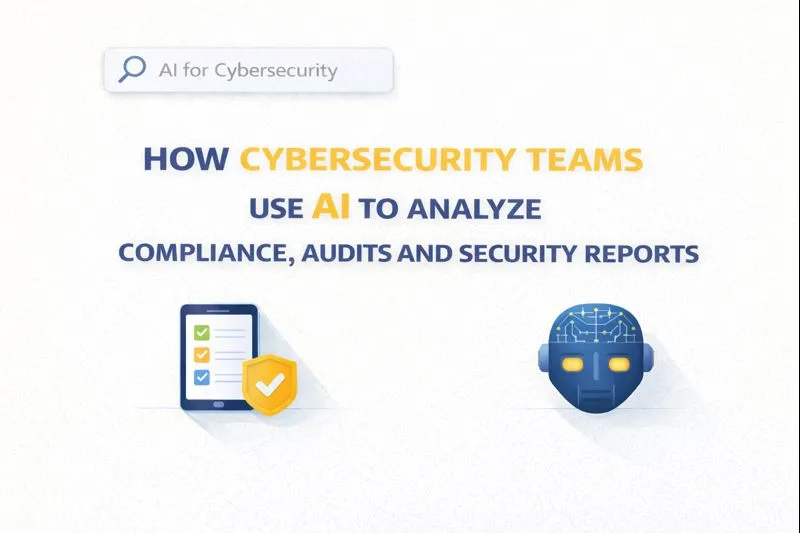Using Lookalike Audiences for Scalable Growth
TL;DR
Understanding Lookalike Audiences
Okay, so you're probably wondering what all the fuss is about with lookalike audiences, right? Are they just another marketing buzzword? Well, not really. They're actually pretty darn useful.
Basically, a lookalike audience lets you find new people who are similar to your existing customers. Think of it like this, you have a group of customers who are already buying your stuff, and you want to find more people just like them. Lookalike audiences helps you do exactly that.
- Definition: Lookalike audiences are, well, audiences made up of people who share similar characteristics with your best customers. It's like cloning your ideal customer, but legally, of course.
- Target Audience vs. Lookalike Audience: A target audience is who you think should be buying your product. A lookalike audience is based on who actually buys your product. Big difference, huh? One's based on assumptions, the other on real data.
- Digital Marketing Role: They play a huge role in making sure your ads are shown to the right people. Instead of blindly targeting demographics, you're targeting people who are likely to convert because they resemble your current customer base. Makes sense, doesn't it?
Why should you care about lookalike audiences? Because they can seriously boost your growth. Seriously.
- Reach and Awareness: You're expanding your reach to people who are actually interested in what you offer. It's not just about reaching more people; it's about reaching the right people.
- Conversion Rates: When you target people similar to your existing customers, they're more likely to convert. I mean, it's basic psychology, isn't it? People like what other people like them like.
- Customer Acquisition Costs: By targeting more effectively, you're not wasting money on people who'll never buy from you. Less wasted ad spend = lower acquisition costs. Who doesn't want that?
- Targeting and Personalization: You're getting better at understanding who your customers are. This means you can create more personalized marketing campaigns that actually resonate with them.
So, how does all this work in practice? Well, imagine you're an e-commerce business selling organic skincare products. You can use lookalike audiences to find people who have similar purchasing habits, interests, and demographics as your current customers who buy a lot of organic skincare. This means your ads are more likely to be seen by people who would actually be interested in buying your products.
Now that we've got a handle on what lookalike audiences are and why they matter, let's dive into how you can actually use them to grow your business.
Implementing Lookalike Audiences: A Step-by-Step Guide
Okay, so you're ready to roll up your sleeves and actually build a lookalike audience? Awesome! It's not as scary as it sounds, promise. It's kinda like baking a cake, but instead of sugar and flour, you're using data and algorithms. Mmm, data cake.
First things first: you NEED a good seed audience. Think of it as the "starter dough" for your lookalike. If your starter dough is bad, your whole cake will be a flop, right? Same deal here.
- Quality is Key: This isn't about just throwing any customer data into the mix. You want your best customers. I'm talking about the ones who buy the most, engage the most, and basically love your brand the most. Why? Because the ai is gonna look at what makes them tick.
- Size Matters (Sort Of): There's a sweet spot for size. Too small, and the algorithm doesn't have enough to work with. Too big, and you're diluting the pool with less-than-ideal customers. Aim for something in the hundreds, or even thousands (if you got 'em!). Each platform is different, so it's always good to check their specific recommendations. For example, Facebook often recommends at least 100 people in your source audience, while Google Ads might suggest 1,000.
- Where to Find 'Em: Customer lists are gold. Also, website visitors who converted, app users who are super active... you get the idea. Anywhere you've got a collection of those top-tier customer profiles.
- What Makes 'Em Tick?: Think about what attributes define your best customers. Demographics? Sure. But also, purchase history, website behavior, engagement with your content. The more signals you can feed the algorithm, the better.
So, you've got your seed audience prepped and ready. Now what? Time to tell the platform (Facebook, Google Ads, LinkedIn, etc.) how to find your lookalikes.
- Size and Similarity: Most platforms will let you choose how closely the lookalike audience should resemble your seed. A smaller, more similar audience will be super targeted but have less reach. A larger, less similar audience will have more reach, but might be less qualified. It's a balancing act, really.
- Platform Quirks: Each platform has its own little quirks. Facebook lets you choose a percentage range for similarity (e.g., 1-10% of a country's population). Google Ads uses a "similarity" scale (similar, more similar, most similar). LinkedIn... well, LinkedIn's a whole different beast, but the principle's the same.
- Reach vs. Relevance: The Eternal Struggle: This is where you need to think about your goals. Are you trying to build brand awareness? Go for a broader reach. Trying to drive conversions? Stick with higher similarity.
Here's a little visual to help understand the trade-off:
- High Similarity often means Low Reach but potentially High Conversion Rate.
- Low Similarity can lead to High Reach but possibly Low Conversion Rate.
For example, a healthcare company might use a small, highly similar lookalike audience to target potential patients for a specialized treatment. On the other hand, a retail business might use a larger, less similar audience to promote a seasonal sale to a broader audience.
Now, with your parameters set, you're almost ready to launch. But before you do, let's talk about actually creating a campaign that works.
Lookalike Audiences in the Cybersecurity Context
Cybersecurity's a beast, right? But when you start thinking about lookalike audiences in this context, that's when things get really interesting. It's not just about finding more customers; it's about finding the right people to protect.
Okay, so who are we even trying to reach? In cybersecurity, it's not just one type of person you're after, they're actually a few:
Security analysts: These are the folks in the trenches, day in and day out, fighting off threats. They need the best tools and the most up-to-date intelligence. Targeting them means understanding their daily struggles with alert fatigue and the need for seamless threat detection.
- Seed Audience Connection: A seed audience of users who frequently download technical whitepapers on threat detection or attend advanced security webinars would be great for reaching analysts.
IT managers: They're responsible for the whole shebang, but they might not be as tech-deep as the analysts. They need solutions that are easy to manage and integrate with existing systems. Think about the IT manager at a mid-sized retail business; they need something that's effective but also cost efficient.
- Seed Audience Connection: A seed audience of existing customers who have purchased integrated security solutions or attended webinars on IT infrastructure management would be a good starting point for IT managers.
CEOs and CISOs: These are the big-picture people. They're concerned with risk management, compliance, and the overall security posture of the organization. As they are always on the lookout for ways to maintain and improve their security measures, they need to see the value proposition in terms of business outcomes, not just technical features.
- Seed Audience Connection: A seed audience comprised of existing clients who have high contract values, have attended executive-level security briefings, or have engaged with content on risk management and compliance would be ideal for reaching CEOs and CISOs.
Understanding their unique needs and pain points is the first step to building lookalike audiences that actually work.
So, how do you build a seed audience that'll attract those cybersecurity pros? Here's a few ideas:
- Customers of your cybersecurity products: Obvious, but crucial! These are people who already trust you. They're your best starting point.
- Attendees of cybersecurity webinars or events: These folks are actively seeking knowledge and solutions. They're engaged and interested.
- Subscribers to cybersecurity newsletters: They're staying informed about the latest threats and trends. They're clearly invested in security.
- Users who have downloaded cybersecurity whitepapers or ebooks: They're researching specific topics and looking for in-depth information.
The key is to focus on engagement and intent. People who are actively involved in the cybersecurity community are much more likely to be valuable lookalikes.
Next up, we'll dive into crafting ad creatives that actually resonate.
Avoiding Common Pitfalls and Optimizing for Success
Alright, so you've built your lookalike audiences, launched your campaigns, and now you're just waiting for the magic to happen, right? Well, hold on a sec, because it's not always smooth sailing. There's some common mistakes you need to dodge and some tricks to really make those audiences sing.
- Using Low-Quality Seed Audiences: Remember that "starter dough" we talked about earlier? If you feed the algorithm junk, it's gonna give you junk back. Make sure your seed audience is made up of your best, most engaged customers. A financial services company, for example, shouldn't just throw all their customers into the seed; they should focus on high-value clients who use multiple services.
- Neglecting to Update Your Seed Audience: Things change, and so do your customers. If you're not regularly refreshing your seed audience with new data, it's gonna get stale. Think of it like this: if you found a group of people who loved a product 2 years ago, they may not still be interested. You gotta keep things fresh!
- Over-Relying on Lookalike Audiences: Lookalike audiences are awesome, but they're not a silver bullet. Don't put all your eggs in one basket. You should be using them in conjunction with other targeting methods, not as your sole strategy. It's all about balance.
- Ignoring Platform-Specific Best Practices: Each platform has its own quirks and best practices for lookalike audiences. What works on Facebook might not work on LinkedIn, and vice versa. Do your homework and tailor your approach to each platform. For instance, LinkedIn's emphasis on professional attributes means you'll need to be more strategic for B2B than you might on Facebook.
- Regularly Monitoring Campaign Performance: This ain't a "set it and forget it" kinda deal. (I wish it was, though!) You need to be constantly monitoring your campaign performance and making adjustments as needed. Keep an eye on metrics like click-through rates, conversion rates, and cost per acquisition.
- A/B Testing Different Ad Creatives and Targeting Options: Never assume you've found the perfect ad or the perfect targeting. Always be testing different variations to see what performs best. Try different headlines, images, and calls to action. You might be surprised at what resonates with your lookalike audience.
- Refining Your Seed Audience Based on Data: As you gather data from your campaigns, use it to further refine your seed audience. Identify common characteristics among your best-performing lookalikes and use that information to create even more targeted audiences. It's a continuous cycle of learning and improvement.
- Adjusting Your Bidding Strategy to Maximize ROI: Your bidding strategy can have a huge impact on your results. Experiment with different bidding options to see what works best for your campaigns. Consider using automated bidding strategies to optimize your ROI.
By avoiding these common pitfalls and implementing these optimization techniques, you'll be well on your way to maximizing the potential of lookalike audiences and driving serious growth for your business. And don't worry, it's okay to mess up sometimes. That's how we learn, right?
Now that you know what not to do, let's talk about using lookalike audiences in very specific cybersecurity scenarios...
Integrating Lookalike Audiences with Programmatic SEO
Okay, so you've got lookalike audiences doing their thing – awesome. But what if I told you they could be even more powerful? Enter programmatic SEO, or pSEO. Think of it as giving your lookalike audiences a turbo boost.
- Keyword Insights: Lookalike data can seriously inform your keyword strategy. Instead of guessing what potential customers are searching for, you're using data from those who already love you. If you know your best cybersecurity clients are constantly reading up on "ransomware protection for small business," bam, there's a keyword cluster for ya.
- Content That Resonates: Forget generic blog posts, we want targeted content. Lookalike audiences tell you what your ideal customers care about. Let's say a healthcare company discovers their lookalikes are super interested in telemedicine and ai. They can then crank out content that speaks directly to those interests.
- Drive Traffic: pSEO is all about creating tons of landing pages targeting very specific keywords. When you combine this with lookalike audiences, you're driving highly qualified traffic to these pages. It's like setting up a laser-guided missile for conversions.
- SEO on Steroids: All this adds up to better SEO. More relevant content, better targeting, and higher engagement. It's a virtuous cycle that keeps feeding itself.
Imagine a fintech company uses lookalike audiences to identify a segment of users interested in "sustainable investing for millennials." They then create a series of pSEO-optimized landing pages targeting related keywords, like "esg funds for young investors" and "ethical investing apps." The result? A surge of highly qualified leads.
Next up, let's look at some real-world examples of this power combo in action.
Conclusion
So, you've made it this far – congrats! Now, let's wrap this up and talk turkey, shall we? Are lookalike audiences worth the effort? Short answer: heck yes.
- They seriously boost targeting precision. No more spraying and praying with your ads. Lookalike audiences let you laser-focus on the people who are most likely to convert. Think about it, a small business selling artisanal coffee can use lookalikes to target people who have similar purchasing habits to their current loyal customers, leading to higher sales.
- Continuous optimization is a MUST. Don't just set it and forget it. You gotta keep tweaking your seed audiences, ad creatives, and bidding strategies. It's like tending a garden; you can't just plant the seeds and walk away. You need to nurture it. For example, a financial services firm should regularly update their seed audience with new high-value clients to ensure their lookalike audiences remain relevant.
- The future is personalized. People are craving more tailored experiences, and lookalike audiences are a key ingredient. As ai gets even smarter, expect to see even more hyper-personalized targeting options. Imagine a future where ads are so relevant, they actually feel helpful.
What's next? Well, for starters, expect to see more sophisticated ai algorithms that can analyze even more data points to create more accurate lookalike audiences. Also, there's a growing emphasis on privacy-preserving techniques, like differential privacy, that allow you to build lookalike audiences without compromising user data.
These advancements mean we'll see more accurate lookalike audiences powered by AI, and a greater focus on privacy-preserving techniques like differential privacy, which enhance user trust.
Think about it: as consumers become more aware of data privacy, companies that prioritize ethical data practices will have a competitive advantage.
Ultimately, lookalike audiences are a powerful tool for growth, but they're not a magic bullet. It takes work, experimentation, and a willingness to adapt to stay ahead of the curve. Keep testing, keep learning, and keep pushing the boundaries of what's possible. And hey, don't be afraid to make mistakes along the way – that's how we all learn, right? Now go forth and build some amazing lookalike audiences!




